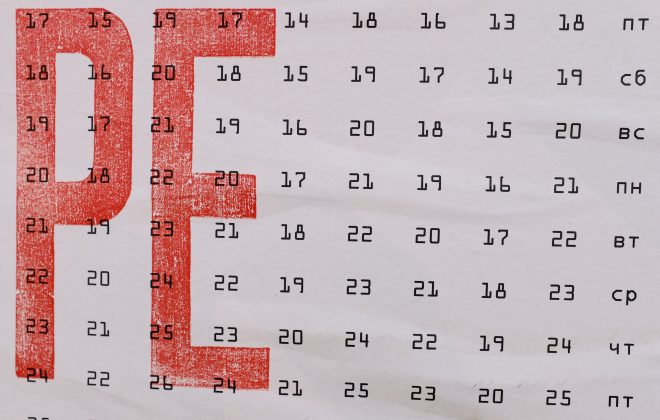7 Design Tricks For Capturing Attention
Photo by Andrea Piacquadio from Pexels
It’s no secret that the world is full of short attention spans. But what does this widespread attention shortage mean for businesses and how they approach their marketing strategies? And how can brands hope to compete with these ever-diminishing attention spans?
Indeed, the pressing problem of the modern designer seems to be: how do I make people care, and quickly?
Luckily there are lots of answers to this question. We’ll delve into a few of them now, and hopefully leave you with a few tricks for grabbing and holding people’s attention.
Keep it simple
When creating content, think in snippets, because that’s how people read.
Try to be brief and to-the-point. Remember that most people are more likely to stop and read a 30-word leaflet than a 500-word essay.
By keeping our marketing material (specifically the copy) snappy and functional, there’s a far greater chance we’ll see full engagement from our audience. Because it’s much easier for people to keep their attention focussed on small amounts of information, especially when they’re busy doing other things (which people usually are when they encounter any kind of marketing material).
There’s also the fact that bite-sized content actually demands less attention in the first place. So you could say: the shorter it is, the easier it is to engage with.
Make a great headline
This is attention-grabbing 101. Creating a compelling headline plays a huge role in generating interest and intrigue. Briefly, a good headline should consist of:
- Trigger words: “what”, “why”, “how” — words that imply that a question has been asked and will be answered by your post/leaflet/blog post.
- Numbers: “The Top 10…”, “7 Ways To…” (or “8 Design Tricks For Capturing Attention”…).
- Adjectives: these change the flavour of your headlines and, in a single word, can drastically alter their tone (“7 unbelievable benefits of…”, “5 life-changing tips for…”).
It’s like the legendary David Ogilvy said, “On the average, five times as many people read the headline as read the body copy. When you have written your headline, you have spent eighty cents out of your dollar.”
Use white space
Pictures or words, less is more. Have you ever noticed how sometimes the quietest person in the room is also the most interesting? Silence is a fleeting luxury in the modern world. Everywhere we turn there’s noise. Whether its loud noises or loud images, everything is striving to be the loudest, because we tend to think that being loud is the same as being noticed.
But sometimes the best way to really command attention is by staying quiet. This goes for design too. By shedding the neon-imagery and vibrant colour palettes and simply letting the page breathe, we can encourage our readers to breathe as well. By using fewer images, you create the impression that the images you have used are more important and well-considered. This makes a stark and meaningful contrast to the buckshot approach of “loud” design.
So remember: when in doubt, edit out.
Be relevant
In journalism, if you ‘bury the lead’ it means you’ve started a story by sharing details that are of secondary importance to the reader. In other words, you’re not being relevant. And it’s not only journalists who are guilty of such attention-pulverising crimes. Brands often ‘bury the lead’ in their content, talking about offers, products, or other things that don’t feel relevant to their readers in the given context.
To be relevant, simply lead with the lead. Consider what the content you’re producing is really about, and why someone would engage with it. Why would a reader click onto a particular blog post? What would they be looking to gain from that transaction?
By putting ourselves in the shoes of our audience, we can really think about what they find important. And when our content resonates and feels genuinely relevant, it’s guaranteed to hold even the shortest of attention spans.
Keep it sweet
By sweet, we mean nice. Because no matter whether it’s a brochure, a website, or a print ad, it has to look nice.
If what we’re presenting to the world isn’t aesthetically pleasing and eye-catching, then we’re already fighting a losing battle. After all, grabbing the attention starts with grabbing the eye. And we can’t grab the eye if our content isn’t eye-grabbing.
So it’s always important to strive for visual enticement, in whatever way works best. Again, it’s all about the aesthetic. And a quality aesthetic is the simplest, most direct, and arguably most effective way to snatch someone’s attention.
Whether it’s illustration, photography, or iconography, just keep in mind that people tend to look at pretty things longer than they look at ugly things. So by creating something pretty and pleasing, we’re far more likely to receive sustained engagement from our audience.
Utilise an effective call to action
Once you’ve done the hard work of actually capturing someone’s attention, you then need to direct it in a meaningful and beneficial way. You can do this most effectively through a good call to action.
A good call to action should give people somewhere to go and something to do. Maybe it’s directing them to a special offer on your website, or offering them a free ebook, or encouraging them to get in touch for a consultation. Whatever it is, the call to action should be the culmination and pay-off of all that hard-won attention.
You can go further into this and learn how to craft an effective call to action here.
Be authentic and keep making content!
In the end, in order to keep our audience’s attention in the long term (and attract the attention of newcomers) it’s crucial to keep making content.
But you should always be mindful to ensure that your content remains meaningful and useful. If you produce articles, brochures, ebooks, and blog posts with good intentions — with the desire to help others expand their knowledge and solve problems — then you’ll find that you’ll effortlessly and organically command attention.
After all, everybody appreciates authenticity. And if you try to help others through your work, then you’ll more than likely find yourself being helped in return.
For more design tips and tricks, why not take a look at these 7 ways to cultivate creativity and generate more ideas.




